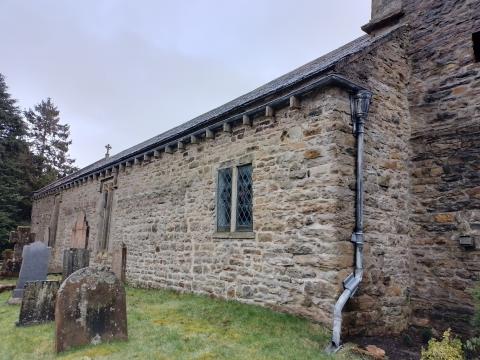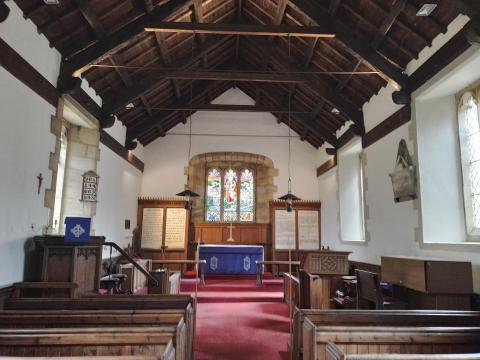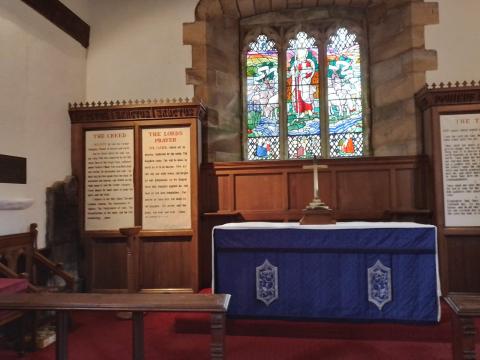Muker Church

Friends and I called at the Parish Church of St Mary the Virgin, Muker, which is to be found in Yorkshire’s beautiful Swaledale. Now I will stop off at any Christian place of worship; even a ruinous shell or humble earthwork may bespeak a former generation’s worship of Almighty God. St Mary’s, however, despite its beautiful village location and glorious dale setting, is a boring church. For any locals or Muker aficionados who are raising their arms in disgust, be it known that I merely repeat the sentiment of Sir Stephen Richard Glynne, Welsh Tory MP and church antiquarian who wrote in Notes on Yorkshire Churches (1922), that Muker’s is ‘wholly devoid of character’. He made my point, but chose better words.

The masonry is rough as though it were medieval, but the windows are neither arched nor boast any tracery. The chancel is respectable but…dull. The font is up to standard but…uninteresting. Sorry, but I think it one of the most mind-numbing church buildings I have ever visited. No details or feature stood out to me as being worthy of inclusion in this blog and, let’s face it, I often scrape the barrel’s bottom as it is. Yet there is one fact about St Mary’s which is remarkable. It is not found in one detail or corner, but the whole. The Church of St Mary the Virgin, Muker, is Elizabethan (1558-1603), so it comes from a period in our history when very few ecclesiastical buildings were constructed. The Reformation was a time of religious and political upheaval, and the new Protestant doctrines discouraged church-building as a means of buying God’s favour, teaching instead that salvation was by grace alone through faith alone.

William Chaderton, Bishop of Chester, authorised the new building in August 1580. This may account for its plain style and boring atmosphere (funds would not be plentiful and ornate styles discouraged). It was a place designed for the hearing of Cranmer’s Prayer Book and the moderate preaching of God’s word. The Elizabethan Church of England was decidedly protestant, though shy of puritanism, a halfway house between Rome and Geneva, to the disgust of papist and Calvinist alike. I know of a church that was built during Bloody Mary’s reign and one other from Elizabeth’s, but they are still rare.
While Elizabethan church buildings are highly unusual (and not generally interesting), they provide a thoughtful comparison with evangelical churches like ourselves. I speak not of buildings and furnishings here, but in the better sense of a church being a gathering of people. In twenty-first-century Britain, thousands of churches have closed, but many more remain open. Of the latter, many will cater for your five senses, offering visual and audio pleasures, such as splendid vestments or professional-sounding worship bands. Others will skilfully rescript their beliefs to neatly reflect prevailing worldly wisdom, basing their codes of sexual ethics on fashionable university textbooks rather than the Bible. A simple church which desires to be faithful to scripture but without offering gimmicks and sensations is an increasingly rare jewel. Asks Solomon:
Who can find a virtuous wife? For her worth is far above rubies. Proverbs 31:10
Solomon knew a thing or two about wives. So too, the Lord Jesus, who seeks a faithful church.

- Log in to post comments


 Sunday Worship 10.45am & 6.00pm
Sunday Worship 10.45am & 6.00pm